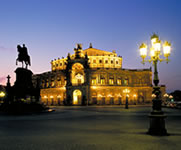Other highlights
Contact
Jever Marketing und Tourismus GmbH
Alter Markt 18
26441 Jever
Email:
[email protected]
Internet:
www.stadt-jever.de
Alter Markt 18
26441 Jever
Email:
[email protected]
Internet:
www.stadt-jever.de
Nature & greenery

The "Ewiges Meer", Germany's largest moorland lake, situated about 40km west of Jever, was formed in approx. 6,000 BC and is an important nature conservation area. On the lake's northern shores, a wooden track runs for approx. 1.8km through the mystical moorland scenery. There is also an educational trail with 12 panels offering a wealth of interesting information. With each changing season, the Ewiges Meer lake is surrounded by new colour and atmosphere.
The Lower Saxony Wattenmeer National Park - on Lower Saxony's North Sea coast in the north of Germany - offers protection to the Wattenmeer, the coastal area of mudflats between the Ems and Elbe rivers, as well as to the offshore East Frisian islands. Visitors here can experience amazing landscapes and stunning natural spectacles, such as the region's characteristic salt marshes, the steep sandy dunes near Dangast and the "floating bog" near Sehestedt, the last remaining outer dyke bog in Germany. The common shelduck, one of this coastal region's most attractive birds, is particularly impressive.
The seven East Frisian islands in the Lower Saxony Wattenmeer National Park are strung out like pearls just a few kilometres off the North Sea's southern coast. You can take boat trips out to the islands from many of the picturesque marshland towns along the coast between the Ems and the Elbe rivers. Wangerooge is the most easterly of the East Frisian islands. Its lighthouse is visible for miles around.
Travel Planner
Select an option...



